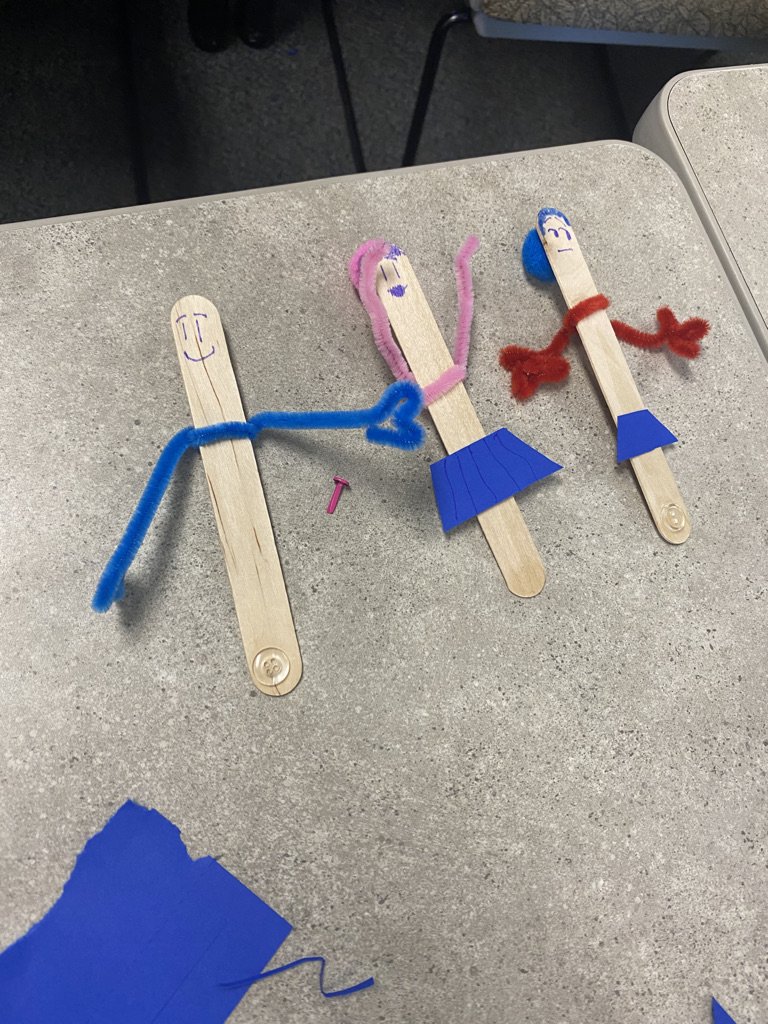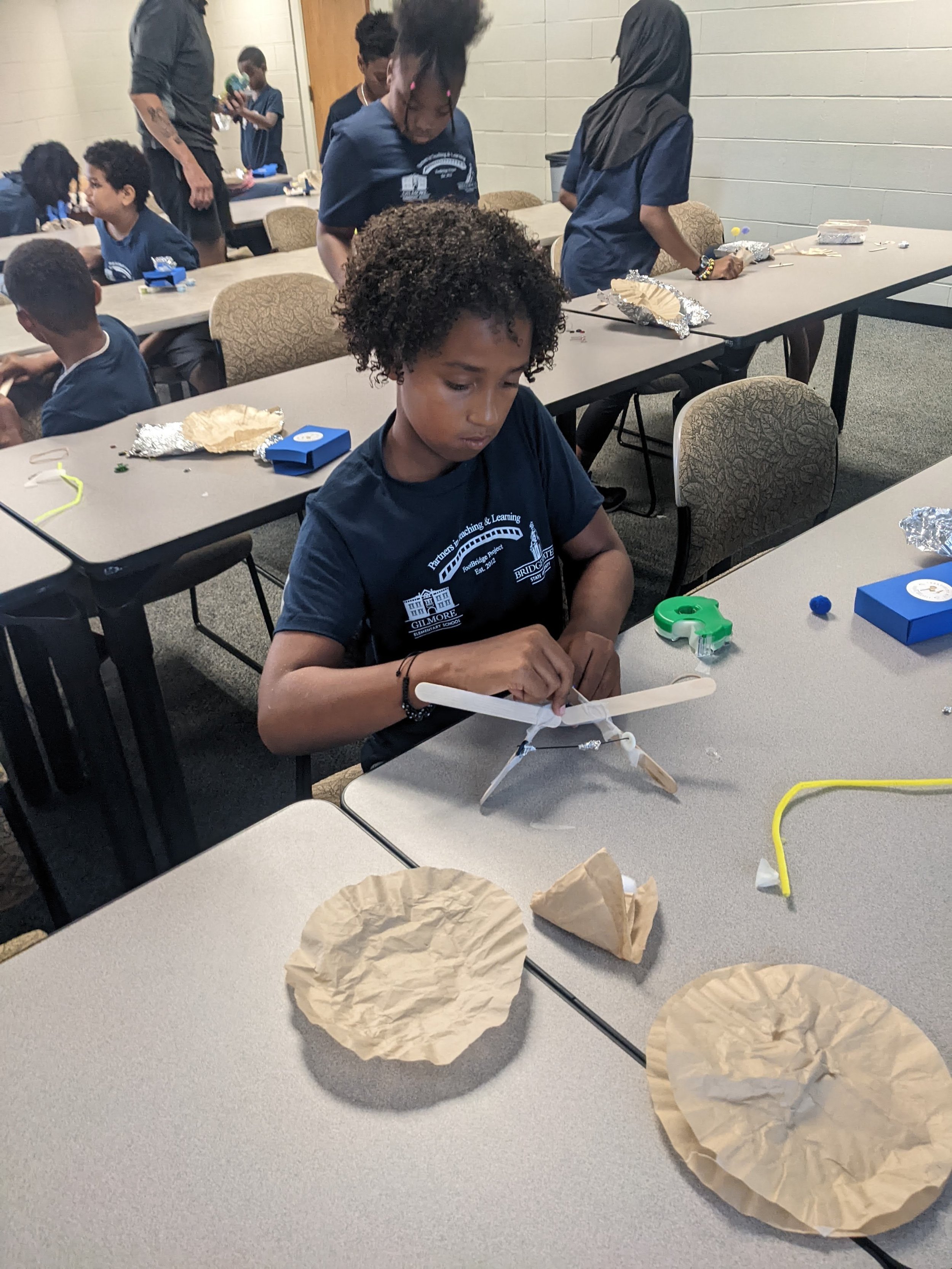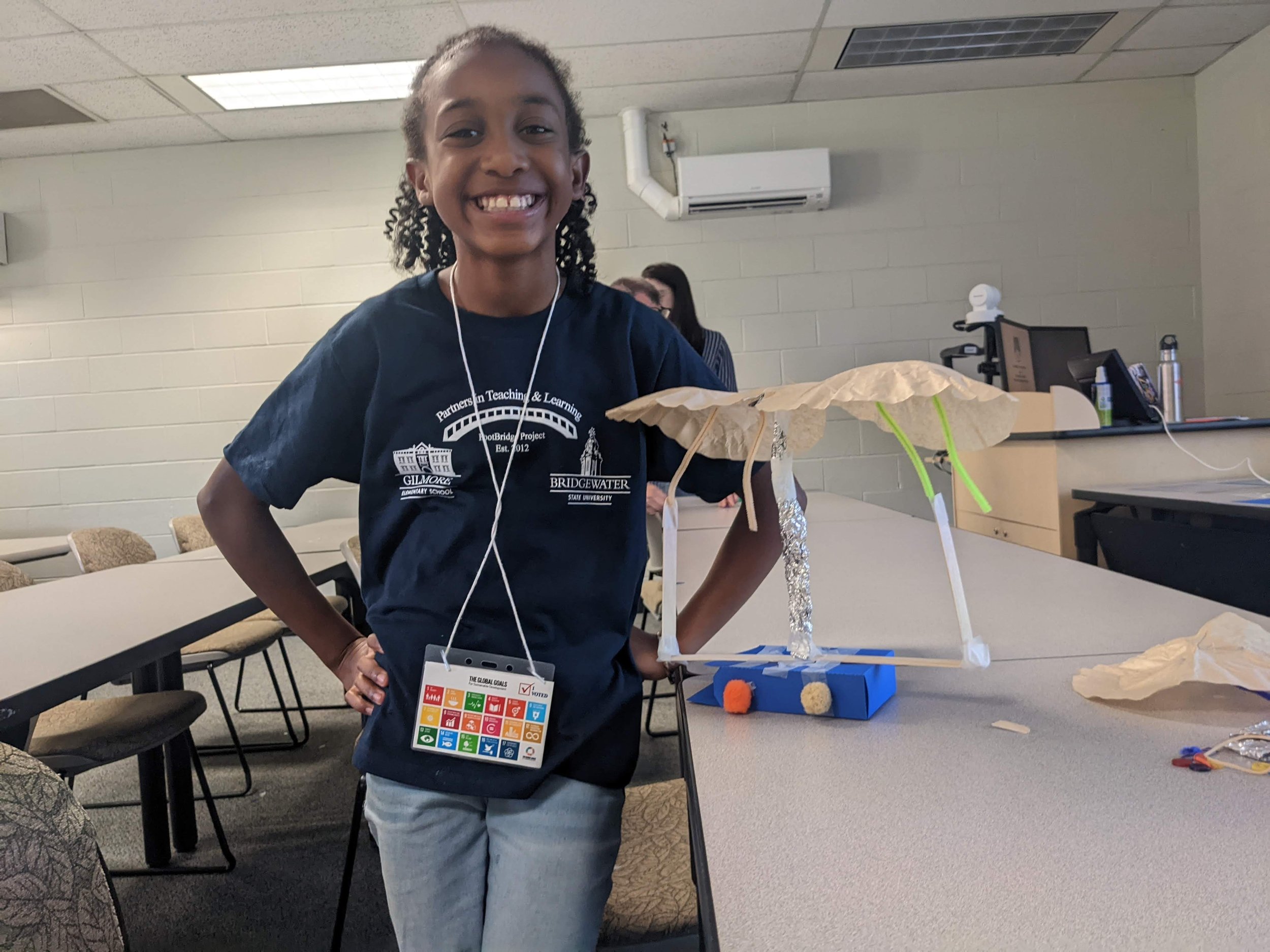Footbridge Students Tackle "Going Places" STEAM Challenge at BridgeWater State University
This blog post was written by Katie Hurwitz, an intern at FableVision Learning. Katie is entering her senior year at the University of Rochester. She is studying World Music, Creative Writing & World Literature, Childhood Education, and TESOL.
Walking around the Bridgewater State University classroom, I saw a plethora of innovations. Some students were thinking collectively; some, individually. And some…forky? Yes, some students had taken the popsicle sticks from their “Going Places Kits” (which I’ll explain in a bit), made arms out of pipe cleaners, dressed them up with clothes made from the boxes themselves, and drew very characteristic faces on them. “Wait a minute,” I asked the group of friends working together. “Is that Forky from ‘Toy Story 4?’” They smiled at me, made their own forkies dance, and humored me as I took a picture of their creations.
Growing up, I have always been friends with “the STEM kids.” STEM—meaning science, technology, engineering, and math—has never been my forte…at least that’s what I perpetually told myself. Priding myself in my interdisciplinary studies of the arts and humanities, I’ve shied away from STEM. This all changed when I started my internship with FableVision Learning and learned that STEM and art are not binary. In fact, they can be combined, simply by adding an A for “arts” into STEM to become STEAM.
Because I aspire to enter a career in elementary education after college, I am now fueled to utilize the concept of STEAM as a core part of my pedagogy. I recently had the experiential-learning opportunity to teach STEAM by helping to run a workshop for the Footbridge Program at Bridgewater State University in Massachusetts.
The Footbridge Program, run by Bridgewater State University’s College of Education and Allied Studies, is a two-week summer program focused on STEAM education and enrichment for Brockton Public Schools fourth and fifth grade students.
With the forty students who attended the program on Thursday, July 14, we worked on “Going Places Kits.” First, we read the award-winning book “Going Places,” by Paul and Peter H. Reynolds. Encouraging students to assume the role of Maya or Raphael, we passed out the kits to all the students and gave them one simple instruction: “Make something that moves.”
The other interns and I had previously assembled these kits. We fabricated each of these small, blue cereal-box-shaped boxes using FabMaker Studio—and inside each of the boxes we stuffed materials including buttons, brads, paper clips, pom poms, pipe cleaners, coffee filters, popsicle sticks, and aluminum foil. Back when we were putting these kits together at the FableVision Learning office, I could have never fathomed what kinds of “things that move” that the students would end up engineering.
On the day, some students emptied out their boxes and glued four buttons to the sides. Bam! They made cars. Other students used the coffee filters to make parachutes. There were a few kids who had an inkling towards aviation (since they learned all about airplanes during another part of the program), so they decided to fold the aluminum foil into an airplane. A couple of the creations truly exhibited divergent thinking. For instance, one of the students used a popsicle stick to create a skateboard.
There were no rules for this project, other than “make something that moves.” Thus, the students could become dreamers like Maya and think outside the box! We demonstrated FabMaker Studio, and students that did not have all the parts they needed inside their box could design new parts themselves. To me, this calibration of creativity certainly encompasses the A for “art” in STEAM. At the same time, it covers the E for “engineering.” Needless to say, the arts and humanities and STEM are not mutually exclusive.









